- Administrator
- Albums and Singles
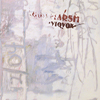 The Public Eyesore label has been extremely prolific in recent years, bringing out some of the most abstract and out of left field works from artists that are either extremely obscure or simply getting their start in the world of sound art. Bob Marsh's disc therefore definitely fits in the raison d'etre of the label, as it is almost impossible to classify, yet has the sense of experimentation and even some sonic similarities to some of the most abstract of the early industrialists.
The Public Eyesore label has been extremely prolific in recent years, bringing out some of the most abstract and out of left field works from artists that are either extremely obscure or simply getting their start in the world of sound art. Bob Marsh's disc therefore definitely fits in the raison d'etre of the label, as it is almost impossible to classify, yet has the sense of experimentation and even some sonic similarities to some of the most abstract of the early industrialists.
The similarities come with one of Marsh's major instruments, the violin. Both Throbbing Gristle and Cabaret Voltaire employed the old instrument in similarly esoteric ways, and here it gets run through enough delay and echo to resemble those early artists. However, the level of abstraction here is even further out. The opening "Over Time You'll See" captures this clearly, the effected and treated violin creating dissonant waves of sound as small fragments of echoed, indecipherable vocals. "A Walk In The Park" plucks the strings of the violin through the wall of echo and creates a wall of sound that is much larger than the sum of its parts.
The vocals on here are probably the most "out there" element: the seemingly random nature of "Bring Out The Dead" is combined with an electronic backing that sounds like every Rick Wakeman keyboard solo layered together. The short "Keep It Sample" is based completely around that: a track based largely around a processed and manipulated voice sample is the entire basis of the track.
In that regard, the disc has a certain dada poetry aura about it. "Voice of America" (possibly a reference to the Cabaret Voltaire album of the same name, but doubtfully) has a repeated vocal motif that is obviously there, but cannot be clearly discerned as to what the voice is actually saying, or if it is anything at all. The sleeve references that nature of the disc as words that "are not clear are unclear," so obviously Marsh intentionally made everything this way.
Granted, this is an extremely difficult listen, as it eschews most things that can be used as reference points in music. As a piece of sound art, it is a captivating document using limited sound sources to compose a unique work. As entertainment, well, I found it an interesting listen, but it is not the type of work I could really see myself returning to many times in the future.
samples:
Read More
- Administrator
- Albums and Singles
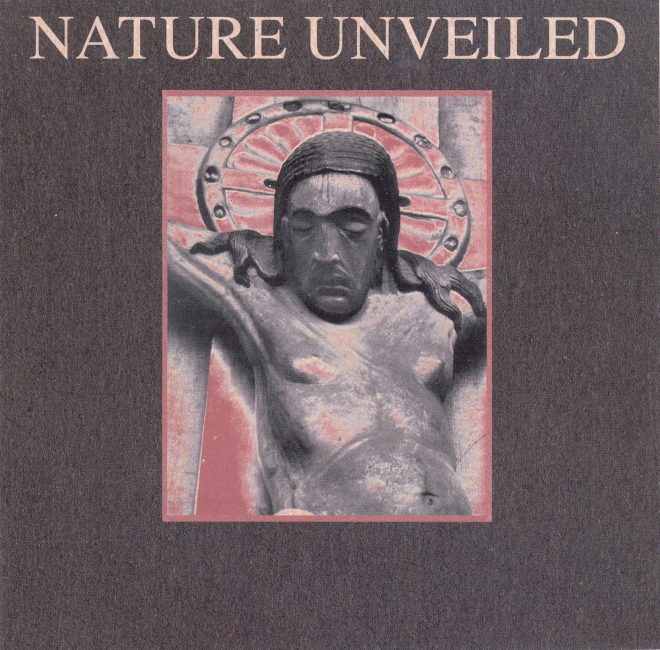 After 24 years David Tibet's debut full-length as Current 93 has been reissued in its original form on compact disc. The audio has been completely re-mastered to great effect, but the additions available on the 1992 release from Durtro are gone, replaced only in the first 1,000 copies by an icy Andrew Liles remix. That remix rounds the album out quite nicely, but the omissions are nonetheless annoying.
After 24 years David Tibet's debut full-length as Current 93 has been reissued in its original form on compact disc. The audio has been completely re-mastered to great effect, but the additions available on the 1992 release from Durtro are gone, replaced only in the first 1,000 copies by an icy Andrew Liles remix. That remix rounds the album out quite nicely, but the omissions are nonetheless annoying.
In England's Hidden Reverse David Tibet compared the sounds on Nature Unveiled to the appearance of shadows cast by a candle's flame. The exaggerated dance of figures projected by the fire is an excellent metaphor for the reverberated moans and chants that jump and teleport throughout "Ach Golgotha (Maldoror is Dead)." Steven Stapleton's ability in the studio helped to translate the entire record into an exaggerated and frightening play of monumental blocks of sound. The way different samples are lumped together and cut irregularly is dizzying, causing no little amount of disorientation. That image of slowly undulating figures above describes the entirety of Nature Unveiled partly because of Stapleton's talent and partly because of Tibet's monstrous and lucid vision. The first groans of sound are as a rising curtain and what follows is a nightmare puppet show of light, wherein the Antichrist is summoned only to be cursed and rejected by an adamant and frightened Tibet. As various samples begin to clash and blend into a supreme panic the effectiveness of Current 93's approach on this record becomes plain. Annie Anxiety's truly awesome performance in "The Mystical Body of Christ in Chorazaim (The Great in the Small)" is one of her most memorable and it heightens the play of human cries, treated pianos, monastic chants, unidentifiable stereo oddities, and defiant vocals that populate both songs. The details are made more powerful thanks to Denis Blackham's re-mastering job and remarkably this album sounds more clear and robust than many modern recordings made by artists with similar palettes. It has been 24 years since Nature Unveiled was released, but it sounds more powerful to me now than it ever did.
Tibet's preoccupation with Christian imagery, apocalyptic narratives, and both surrealism and mysticism is evident throughout the record, something made doubly clear by the revamped liner notes. These same topics are eventually addressed with greater maturity later in Tibet's career, but conceptually Nature Unveiled is surprisingly accomplished. The dual authorship in the liner notes helps to emphasize the dual nature of the record's subject matter, drawing the album's many themes together in the characters of Ducasse and Christ 777 . By reifying man's potential for evil in the character of Maldoror and by emphasizing the hope in Christ's return Tibet manifested the phenomenology of fear and redemption with a fairly amazing depth, even if immature lines like "Fuck you, Maldoror" rear their head now and again. The tension between Isidore Ducasse's anti-God-man and Christ the God-man bares fruit in the end and grants credence to Tibet's synthetic approach. All of this plays out, of course, with respect to "nature," a thing I can only imagine Tibet associates with man. Indeed, closer inspection of the conceptual work also makes clear some still relevant political and social commentary, which are couched in religious expectancy and a sense of hopelessness concerning man's fallen state. Current 93's early output is often sandwiched into the industrial category due to its abrasive qualities, but clearly this recording was unlike anything else being made at the time either sonically or ideally.
It is unfortunate that this reissue is missing the additions from the 1992 CD version of the album; with them it would be a near-perfect release. In that 1992 edition six extra songs were provided: "LAShTAL" and "Salt" from the LAShTAL 12" on L.A.Y.L.A.H., "No Hiding from the Blackbird" and Nurse with Wound's "The Burial of the Sardine" from the 7" originally given away with the record, and "Maldoror Rising (Live in Amsterdam 1984)" and "Maldoror Falling (Live in Brighton 1984)" from two then extant bootlegs. To my knowledge these songs are not widely available and though they are of a lesser quality than the principle material, they still compose an interesting part of the early Current 93 canon. To Durtro/Jnana's credit, the first 1,000 copies of the reissue come with a remix of the album by Andrew Liles called Nature Revealed. In some respects this remix deserves a review all its own, especially considering the massive alterations Liles makes to many important parts of the record. His style brings an odd iciness to the whole affair as he freezes many moments on the record and casts them into an uncomfortable stasis. He also increases the presence of pure noise on the record, which provides an increased anxiety and semblance of destruction. Liles manages to summon the Antichrist with bravado, but unlike Tibet he seems happy with allowing his evil to brood. Unfortunately this remix is only available to the first 1,000 people that buy the reissue and so in some time I imagine Tibet will have to give due consideration to all the material associated with Nature Unveiled.
samples:
- Ach Golgotha (Maldoror is Dead)
- Ach Golgotha (Maldoror is Dead) (Nature Revealed)
- The Mystical Body of Christ in Chorazaim (The Great in the Small) (Nature Revealed)
Read More
- Administrator
- Albums and Singles
 Originally put out as a limited CD-R upon Steven Stapleton's appearance in Portland, Oregon, in celebration of the release of She and Me Fall Together in Free Death back in 2003, this recording now appears on vinyl for the first time. With muffled voices and strange drops in audio that at first don't seem intentional, this is an odd album in a discography that practically defines the term.
Originally put out as a limited CD-R upon Steven Stapleton's appearance in Portland, Oregon, in celebration of the release of She and Me Fall Together in Free Death back in 2003, this recording now appears on vinyl for the first time. With muffled voices and strange drops in audio that at first don't seem intentional, this is an odd album in a discography that practically defines the term.
All 13 tracks are untitled, and sometimes it is hard to tell where one ends and the next begins, a distinction made even more difficult on vinyl. Voices play a big role on this album, often muted or wildly echoing often at the expense of intelligibility, almost as if they were announcements in a foreign country in which the traveler doesn’t know the language. When they are clear, they’re saying ordinary things like, "Right, yeah, check, we're all ready/We're all ready/Right, here we go," but they are more often at the edge of comprehension, like something uttered in a dream but forgotten upon waking. Feedback frequently erupts yet quickly fades, with mechanical objects frequently cycling from ear to ear to keep the listener from gaining any solid ground. Whimsical textures like silly laughter or the repeated clearing of a throat keeps things playful without sacrificing the menace generated by the other elements. The first side ends with loops and an increasingly loud drone that threatens to grow unbearable before it becomes fuzzy low-end oscillations.
The second side starts with sliding metallic echoes and a damp alarm that swells in volume over time before a quieter bass tone grows in its place. Clanging metal dominates from there, joined by rattling jars, chains dragged over pots for strange harmonic effect, more scraping metal, and even some brief liquid splashes. Even though many of these textures appear seemingly at random, in the background is a deep bass presence that returns intermittently to suggest some sort of meaning even if it doesn’t point to anything specific. Added to this is the non sequitur of someone of chewing an apple, which again lightens the tone. The album ends with a heavily processed voice that never manages to communicate its message despite whatever importance it may serve.
While mutated voices and metallic sounds have showed up on previous Nurse albums, they have never sounded quite like this before. Always amusing even as it confounds, Pierced Rectums has a distinct vibe all its own.
samples:
Read More
- Administrator
- Albums and Singles
 Cloudland Canyon deliver on the promises of a kraut-rock epic hinted at by their previous releases with their full length debut on kranky. The album traverses a breadth of sounds, embracing funky treadmill grooves, swelling synthesizer baths, and bucolic psych jaunts.
Cloudland Canyon deliver on the promises of a kraut-rock epic hinted at by their previous releases with their full length debut on kranky. The album traverses a breadth of sounds, embracing funky treadmill grooves, swelling synthesizer baths, and bucolic psych jaunts.
Between their Silver Tongued Sisyphus EP and their collaboration with Lichens on Holy Mountain, it was obvious big things could be expected from this duo. On those releases, it felt as though Cloudland Canyon were holding in the reigns, and giving us merely a taste of where their sound could go. Here Simon and Kip let loose and discharge their fullest noise yet.
"Krautwerk" begins with a swath of beautifully textured drones and synth washes that we've come to know these guys for, but soon ramps into a full-on groove living up to the song's title. Understated bass and percussion intermingle with squealing and wah'ed guitar perfectly. The clear and upfront vocal chants are a welcome addition to Cloudland Canyon's sound, which previously featured very little and over-effected voice. The track's beat never gets stale and comes to an end appropriately.
After the vibrant "White Woman," we get the obviously Cluster-inspired "You & I." A steady analog drum machine beat holds down the repeated shift between descending synthesizer sweeps and indiscernible but catchy vocalizations. You’re kept nodding until the tempo is drug to a snails-pace and the song is overtaken by an intoxicating waver and subtle distortions.
While hard to pick just one, "Heme" is the stand-out track on this record for me. After two minutes of soaring through the clouds, we're gently let down into a pasture where delicate keyed and plucked lines sift through the grass and into the ears. While this is perhaps the lightest moment on the album, it is also the most sonorous. The title-track follows and is an appropriately darker and intense juxtaposition. The closer, "Mothlight Part 1," is short lived but effective. It is certainly a happy note on the end of an album that runs the gamut of emotions.
Lie In Light is exactly what I was hoping to hear from Cloudland Canyon. While living up to the tradition of kosmiche musik and the 70’s kraut-rock masters, it doesn’t get bogged down in its roots and has carved out a unique space all its own.
samples:
Read More
- Administrator
- Albums and Singles
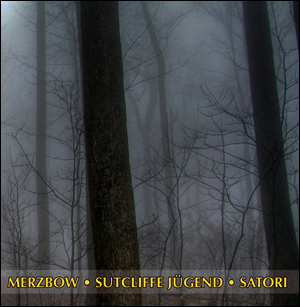
Artist: Merzbow / Sutcliffe Jügend / Satori
Title: Split
Catalogue No: CSR102CD
Barcode: 8 235664842 6
Format: CD in card sleeve (shrinkwrapped)
Genre: Japanese Noise / Power Electronics / Fortean Electronics
Buy CD | Download Album
Released on the occasion of Merzbow, Sutcliffe Jügend and Satori at ULU, London, 19th April 2008. Japanese Noise, Power Electronics and Fortean Electronics from these 3 giants of the Noise / Industrial scene, with one exclusive studio track from each act. This CD is presented in a full colour card slip and is shrinkwrapped. Limited to 1000 copies only.
Tracks: 1. MERZBOW - '-feedyellow mix.1 ' (14:33) | 2. SUTCLIFFE JÜGEND - 'Pigmother ' (4:48) | 3. SATORI - 'Paralysis (Hypnopompic Mix) ' (6:28)
Read More
- Administrator
- Albums and Singles
 Alessandra Celletti has previously interpreted Glass, Gurdjieff and Satie with her splendidly vivid piano style. This third album of dramatic original material adds vocals and drums on some pieces and, incidentally, reminds me why I listen to music.
Alessandra Celletti has previously interpreted Glass, Gurdjieff and Satie with her splendidly vivid piano style. This third album of dramatic original material adds vocals and drums on some pieces and, incidentally, reminds me why I listen to music.
In the wrong hands, the sound of piano can easily tip into music that is either unpleasantly flowery or cold and unaffecting. Celletti consistently avoids these pitfalls with a light yet energetic approach. Some of her creations exude a sense of mischief while others rely on solemnity or a stark beauty. Most tracks on Way Out feature drummer Fabio Ferri and also transcendental, utopian, English-language lyrics written by Renzo Pin. From the violent passion of "Foolish Child" to the gentle, playful, almost café pop of "Hundred Points," Pin's words are cosmic enough to contend with the emotional range of Celletti's voice. Ferri's dynamic style is a good match too, most obviously on the instrumental "Burning," a blistering yet clean track of which Tortoise might be proud.
The balance is right on the mesmeric piece "Seventh Heaven" too, parts of which sound like the watercolor pastoralism of Virginia Astley merged with Gregorian undertones and the whispers of cheerfully insane ghosts. As a bonus, the beautiful title track from Celletti's album "Chi Mi Dara le Ali" is included with vocals by Giuseppe Atria.
Celletti released her first album Les sons et les parfums (works by Debussy, Ravel and Satie) in 1994. Then with Viaggio a Praga she explored Bohemian composition. Amongst the recognition of her music have come scholarships, commercial success, and the use of her interpretation of Satie's "Gnossienne #1" in the movie Revolver. In November 2007, The Golden Fly an exquisite album of her solo piano compositions was released in Italy. She plays the piano with admirable clarity, intellectual substance, hypnotic restraint, and an expressionistic, theatrical soul. All of which makes me wonder how on earth I have avoided her until now. Certainly, such a discovery makes worthwhile the hours spent diligently listening to countless humdrum disappointing releases. Ciao Alessandra, Goodbye Heart.
samples:
Read More
- Administrator
- Albums and Singles
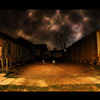 While this moderately hyped debut showcases the tried-and-true qualities of these two seasoned rockers decorated with bloodstained major label merit badges and a priceless caliber of indie credibility, rarely does it step outside their established comfort zones to celebrate this sacred union of American misanthropes.
While this moderately hyped debut showcases the tried-and-true qualities of these two seasoned rockers decorated with bloodstained major label merit badges and a priceless caliber of indie credibility, rarely does it step outside their established comfort zones to celebrate this sacred union of American misanthropes.
If back in the late nineties someone had told me that the sinister frontmen of The Afghan Whigs and Screaming Trees would continue to be relevant in 2008, I would probably have cocked a skeptical eyebrow. Though my admiration for Greg Dulli has grown and grown since first hearing Gentlemen, one of the greatest rock albums of all time, back in 1993, I considered myself part of a cultish sect of his worshippers. As for Mark Lanegan, his post-Trees work hardly crossed my radar until he made serious waves on his critically acclaimed 2006 collaboration with Isobel Campbell, formerly of Belle and Sebastian. In principle, their continued creative survival should only be bolstered by this collaboration, returning to a label that once housed both artists’ breakthrough projects.
An imperfect record from imperfect men, Saturnalia feels suspiciously like a cautious retread of their respective catalogs, along with an indulgent celebration of their shared influences. Unsurprisingly, blues, soul, and Americana pervade these twelve deep cuts. While so much of the album is listenable enough, I expected something more from these venerated veterans of the underbelly. Dulli in particular has written so many anthemic choruses in his day that the dearth of them here downright startles. "Bete Noir" and "The Body" meander along at the whim of their creators, never quite enticing listeners with something even slightly memorable to wrap their arms around. Lost in the groove, Dulli and Lanegan at times appear to have forgotten how to write a proper song, a disappointment considering their prior track records.
Despite these issues, the album offers a great deal to enjoy. On the powerful, apocalyptically personal single "Idle Hands," Lanegan spits and growls his taunting verses, while Dulli assumes his role with a charmingly thin near-falsetto. Balancing one another out, this is where the two frontmen coexist peacefully and most satisfyingly. Yet "Seven Stories Underground" reminds of the exceptional range of Lanegan' vocal abilities, something that may surprise those enamored with the cigarettes-and-alcohol drenched delivery he has become particularly revered for over the past few years. Lyrically breathtaking, "Front Street" shows Dulli bearing his lecherous soul while thumping his chest as he sings "Give me five minutes / With your sweetest sweetie / If she's fine as your missus / Then she's fine enough for me."
Though separated by a good decade and sharing only one collaborator in common, The Gutter Twins deserve to be regarded in the same breath as Mad Season, an understated supergroup of grunge alumni that recorded just one breathtaking album that I will never tire of. Lanegan's supporting role on that record gets engulfed by Alice In Chains vocalist Layne Staley, his bedraggled and damaged soul on display, yet Lanegan has somehow carried the introspective essence of that material to Saturnalia. Of course, Dulli's no stranger to darkness, having mined it extensively with the Whigs and The Twilight Singers, a project that ensures his legacy as one of the most charismatically menacing and lyrically honest performers to come out of the nineties. Shying away from progression, The Gutter Twins settle into what feels right to them, a sound familiar and safe to their fans, but still terrifying to outsiders.
samples:
Read More
- Administrator
- Albums and Singles
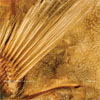 An established New England artist, Murray has worked in the framework of "drone" for quite a while now. Before it was the trendy thing to do, I might add. In that respect, it is no surprise that his work transcends the "let's see how long we can sustain this note for" school, but more of the pure, dissonant minimalism akin to the old masters like Niblock and Xenakis. What comprises this album then is therefore dissonant and difficult, yet compelling and hypnotic in its brutish subtlety.
An established New England artist, Murray has worked in the framework of "drone" for quite a while now. Before it was the trendy thing to do, I might add. In that respect, it is no surprise that his work transcends the "let's see how long we can sustain this note for" school, but more of the pure, dissonant minimalism akin to the old masters like Niblock and Xenakis. What comprises this album then is therefore dissonant and difficult, yet compelling and hypnotic in its brutish subtlety.
Indexed as a single 49 minute piece, "Commonwealth" is apparently based on a combination of guitar and analog synthesis, all of which was subject to heavy digital processing and manipulation. It is hard to discern the actual instrumentation, however, because the sound resembles a consistent, never-ending machinery hum. The mechanized din never relents throughout, yet it becomes hypnotic in its superficial simplicity. Listening closer, the subtle shifts and changes in tonality become more and more apparent.
The fact that the piece has that constant mechanical quality lends greatly to the listener developing their own interpretation of the sound. At times the track reminded me of a well used, contact mic'd air conditioner, and at other times it could have been the last remaining echos of a symphonic orchestra, held and repeated for infinity. It is the sonic equivalent of staring up at the clouds and finding various shapes that other cannot see.
The style of the disc stays pretty consistent throughout the duration: the rumble never really lets up, though the shifts in pitch and tone are drastic enough that it never feels overly repetitive or dull. Instead, it becomes entirely captivating in its ceasing to relent. The most dramatic shift is towards the final half of the piece in which the volume slowly begins to drop, and the rattle becomes more of a hum, going from machinery clanks to the peaks and valleys of a sine wave.
Murray's meticulous attention to detail is what makes this disc such a compelling work. Although it has that seeming level of simplicity, a close inspection reveals so much more to the work, and a level of structure and composition that puts him squarely in league with the likes of Francisco Lopez and Achim Wollscheid and other big names on the scene.
samples:
Read More
- Administrator
- Albums and Singles
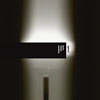 A three way live improvisation recorded at the Musica Genera festival in 2006, the 30 minute set (indexed as 4 tracks for convenience) manages to be extraordinary abstract in sound, yet features some of the most structurally sound improvisational elements that I have heard in years. Crossing the often faint boundaries between electro-acoustic, ambience, and free jazz, it is pretty unique in its overall sound.
A three way live improvisation recorded at the Musica Genera festival in 2006, the 30 minute set (indexed as 4 tracks for convenience) manages to be extraordinary abstract in sound, yet features some of the most structurally sound improvisational elements that I have heard in years. Crossing the often faint boundaries between electro-acoustic, ambience, and free jazz, it is pretty unique in its overall sound.
The opening of clattering percussion from Tony Buck, ambient loops of nfeedback from Cor Fuhler, and muted sax work from Anna Zaradny could, at only a cursory inspection, be lifted from any of many avant garde projects across the world. What sets the work apart is the careful restraint and structure: for all the abstraction fo the instrumentation, the work has a steady pulse and a discernable structure that is far more musical than most.
During this opening, the slow build of layers and volume leads the listener to expect that an outburst is just around the corner: the prepared feedback loops get louder, the sax feels more forcefully muted, and the percussion elements get more and more dissonant. This tension continues and continues until it all drops away, never reaching the explosive climax the listener expects as it moves into the next segment. It is obvious that the track markers in this piece weren't randomly assigned, because each of the first three segments follow this pattern of building up from subtlety into dissonance, but never reaching the full, impending chaos.
The tracks all strike that delicate balance between the harsh dissonance and abstraction of the instrumentation, but layered and applied in a musical, pleasant fashion. The repeating motifs of the second segment are not conventional sounding by any means, but the way they repeat and are layered with each other owe more to classical structure than the more unrestrained elements of free jazz that come about.
This trio doesn't leave the fan of harsh, raw free jazz with a case of blueballs for the entire work. Towards the end of the fourth track, all three artists open up: Zaradny makes her sax skronk and squeal; Buck makes a complete percussive racket; and Fuhler begins to bash the lower keys of his piano with a great deal of force. The chaotic end is a short part of the overall work, but more than enough to satisfy and remove the tension that built up in the minutes leading up to this moment.
That is what makes this stand out from any other combo that might work with a similar sonic pallet, the measured pace and underlying sense of musicality. To put it in perspective, both Michael Bay and Werner Herzog use cameras and film, but the way those are used it what sets them apart drastically in the field of art. Others may be doing something similar to this combo, but they're not doing it as well.
samples:
Read More
- Administrator
- Albums and Singles
 For reasons unknown, Thomas Brinkmann's Georgian muse simultaneously presents her third and fourth full-length releases for the clandestine Max Ernst imprint, comprising three discs worth of all-new material. Seldom groundbreaking, flagrantly derivative, and intermittently appealing, Natalie Beridze's purposefully glitchy compositions appear apropos of the icier temperatures of the season.
For reasons unknown, Thomas Brinkmann's Georgian muse simultaneously presents her third and fourth full-length releases for the clandestine Max Ernst imprint, comprising three discs worth of all-new material. Seldom groundbreaking, flagrantly derivative, and intermittently appealing, Natalie Beridze's purposefully glitchy compositions appear apropos of the icier temperatures of the season.
Brinkmann's production silence in 2007 was near deafening after the explosive back-to-the-well experimentation of Klick Revolution, which makes it all the more worse that he would choose Berdize's bland brand of regurgitated sound for such grand attention in lieu of new material of his own. The unfocused TBA double album Size And Tears and its immediate single disc successor The Other as Tusia Beridze dropped concurrently this past autumn, and, admittedly, it has taken me much time to comprehend why Brinkmann opted for such inessential overindulgence. Had the latter of these releases been unleashed in lieu of the expendable former, I would probably find myself far less irritated by his decision to release such undeserved glut from a minor artist.
Without any hesitation, I can assert that Size And Tears embodies the type of self-indulgent pretension that no listener should willingly subject himself to when, out there in the marketplace, a plethora of great new music awaits. Full of amateurish tape manipulation of speech samples, "Monster Council And She Goes Under The Ocean" sets the precedent for the dreadful experience that follows. In her creative attempts to invent an updated take on Lewis Carroll's Alice tales, Beridze spends too much time on concept and not nearly enough on anything else. "Teacher" basks in its own quasi-cool, reveling in the clichéd apathy of its hackneyed, droll delivery and tinkling piano schmaltz. Comprised of throwaway track after throwaway track, this dubious collection feels far more like a cathartic hard drive dump than the creative, introspective journey it presents itself as. Clocking in at over two hours, the barely palatable Size And Tears demands a level of patience and attention that it just doesn’t deserve. Though undeniably dated and practically stinking of its naturally moldy 1990s IDM influences, The Other is by far the more stimulating and lucid of the two, creating coherent songs from the incomplete sketches and concepts scribbled in the margins of the disjointed Size And Tears. Gauzy opener "After Me In Soft Poles" instantly recalls Aphex Twin's ambient days, replete with intimate warmth like an old blanket or knitted sweater. At the same time, "Weeksends" seems derived partly from his Polygon Window period with agoraphobic, heavy machine atmospheres begging in vain for a hard 4/4 rhythm a la "Quoth" to erupt and lay waste to the factory floor. Occasional Brinkmann collaborator Marcus Schmickler, known best for his work as Pluramon, lends his voice to "Beam Plaster," a laid back blend of shimmering drones and softly skittering percussive clicks. Beyond this, Beridze handles the remainder of the vocal work. At times, her tense, evocative delivery lies somewhere between Cosi Fanni Tutti's hypnotic cool and Nico's alien indifference as on "Somewhere There's A Father," "From UR Eyes," and the abstractly funky "Into The Lost Moments." Sometimes, however, she almost reaches the pulchritude of 4AD's former stable of quasi-gothic chamber singers. "X. It Snow" shrouds Beridze in a shoegazer mist, her slurred voice simultaneously whispering and calling out amid the thick fog of pads and glitchy crackles.
Though undeniably dated and practically stinking of its naturally moldy 1990s IDM influences, The Other is by far the more stimulating and lucid of the two, creating coherent songs from the incomplete sketches and concepts scribbled in the margins of the disjointed Size And Tears. Gauzy opener "After Me In Soft Poles" instantly recalls Aphex Twin's ambient days, replete with intimate warmth like an old blanket or knitted sweater. At the same time, "Weeksends" seems derived partly from his Polygon Window period with agoraphobic, heavy machine atmospheres begging in vain for a hard 4/4 rhythm a la "Quoth" to erupt and lay waste to the factory floor. Occasional Brinkmann collaborator Marcus Schmickler, known best for his work as Pluramon, lends his voice to "Beam Plaster," a laid back blend of shimmering drones and softly skittering percussive clicks. Beyond this, Beridze handles the remainder of the vocal work. At times, her tense, evocative delivery lies somewhere between Cosi Fanni Tutti's hypnotic cool and Nico's alien indifference as on "Somewhere There's A Father," "From UR Eyes," and the abstractly funky "Into The Lost Moments." Sometimes, however, she almost reaches the pulchritude of 4AD's former stable of quasi-gothic chamber singers. "X. It Snow" shrouds Beridze in a shoegazer mist, her slurred voice simultaneously whispering and calling out amid the thick fog of pads and glitchy crackles.
Devoid of originality, these two releases provide retrograde entertainment for those still clinging to the specters of electronic music’s recent past. Considering Brinkmann's thrilling and enlightened body of work, Beridze seems almost unworthy of sharing space on Max Ernst with him. Then again, after listening to Brinkmann's latest, When Horses Die, perhaps the man has grown fond of regressive mediocrity in the hopes that others might as well. Either that or he has completely lost the plot, in which case I am more than a little inclined to blame the muse.
samples:
Read More
- Administrator
- Albums and Singles
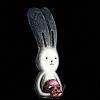 Instrumental bands are everywhere and invariably they sound like some combination of Mogwai, Godspeed and Explosions in the Sky. Other influences creep in but rarely do they escape the dreaded "post rock" tag, not without some gimmick anyway. The Jimmy Cake do manage to come across as being separate to this whole thing, despite on paper sounding like they are the archetypal late '90s/early '00s art rock band: nine core members, string section, unusual instruments and long songs. No, they are more than that; they have a creative spirit that pushes them beyond their contemporaries.
Instrumental bands are everywhere and invariably they sound like some combination of Mogwai, Godspeed and Explosions in the Sky. Other influences creep in but rarely do they escape the dreaded "post rock" tag, not without some gimmick anyway. The Jimmy Cake do manage to come across as being separate to this whole thing, despite on paper sounding like they are the archetypal late '90s/early '00s art rock band: nine core members, string section, unusual instruments and long songs. No, they are more than that; they have a creative spirit that pushes them beyond their contemporaries.
Every city has one, a band that for some strange reason never really made it beyond its borders yet deserves to take over the world. Instead of being known for U2 or Westlife, Dublin should be known for The Jimmy Cake. Since I first heard them they have been in my top five artists of all time, fighting off much impressive competition to retain their place. Their previous albums and live shows have blended krautrock with blistering jazz, rock with contemporary composition and sprinklings of inspired improvisation. Unfortunately, for the last five years they have only surfaced occasionally in local venues, aside from the odd compilation release, there has been no recorded output at all since 2003's Superlady EP. Thankfully, despite many line up changes over the last few years, they are back with Spectre & Crown which has very much been worth the wait.
The most obvious change to my ears with this album is that the group have mellowed a bit. The fiery, jazzy explosions of their older releases has been dampened down, instead Morricone-esque motifs take to the fore. The whole thing sounds more measured and calculated. However, there is still a strong motorik rhythm going through the album, it is not like they have all of a sudden stopped rocking out. Pieces like "Jetta's Place" manage to combine this energy without spilling out of control. "The Day the Arms That Came Out of the Wall" is a more laid back affair; a languid and fluid bass line allows the brass section and piano to build up before reaching a joyous climax.
And joy is an emotion that The Jimmy Cake generally have in bucket loads. I cannot help but smile when listening to them but there are a couple of more solemn moments on Spectre & Crown. "Red Tony" is an elegiac piece; a downhill piano line starts the music rolling, each member of the band adding a small piece of melancholy. Elsewhere, the strings and recordings of rain on "The Art of Wrecking" evoke the same feelings as listening to Gavin Bryars' The Sinking of the Titanic. The combination of the mournful strings and water is crushing in its beauty.
Towards the end of Spectre & Crown is the monumental "Hugs for Buddy." Here is a melting pot of everything that makes The Jimmy Cake special. The powerful rhythms (centred around the most solid drumming this side of John Bonham's ghost) and layers and layers of instrumentation bring to mind the poppier side of Sterolab being channelled through whatever dimension that Can plucked Tago Mago from. In a word, it is cosmic. Doctors should use it as a clinical test for paralysis because it is impossible not to get completely lost in it and shake your money-maker for its duration.
I cannot convey how enjoyable Spectre & Crown is. After a painfully drawn out recording process, this could have very easily ended up overworked, overproduced and ultimately flat. Thankfully there has been no over- egging of The Jimmy Cake, they have risen to the occasion and now is the time for them to get their just desserts.
samples:
Read More

